Tag: cultural history
Lars Levi Laestadius: Lappalaisten mytologian katkelmia [Fragments of Lapp mythology]
23 September 2011 | Mini reviews, Reviews
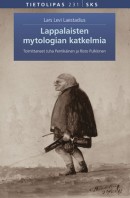 Lappalaisten mytologian katkelmia
Lappalaisten mytologian katkelmia
[Fragments of Lapp mythology]
Toimittaneet [Edited by]: Juha Pentikäinen ja Risto Pulkkinen
Suomentanut [Translated into Finnish by]: Risto Pulkkinen
Helsinki: Suomalaisen Kirjallisuuden Seura / the Finnish Literature Society: 400 p., ill.
ISBN 978-952-222-257-2
€ 28, paperback
The Swedish pastor Lars Levi Laestadius (1800–1861) is known as a preacher who criticised the dead dogma of the church and as the founder of Finland’s largest charismatic sect – although Laestadius did not even live in Finland. He was also a journalist who was active in the temperance movement and wrote a great deal of religious literature; Laestadius may be the best-known Sámi of all time. As well as an ecologist and botanist, he was also a philologist with a knowledge of the dialects of the Sámi language, and as an ethnographer Laestadius studied the history of the Sámi, collecting their beliefs into a system he called the Lapps’ mythology. It is only now that this work has been published in its entirety in Finnish. An expedition funded by Louis Philippe, king of France, in 1838–1840, played a decisive part in the birth of the work: Laestadius was appointed guide to the expedition, and a study of Lapp ‘history’ was commissioned from him. Part of the manuscript was long lost, but in 1946 it was discovered in the library of Yale University.
Translated by Hildi Hawkins
Tchotchkes for the tsar
11 August 2011 | Reviews
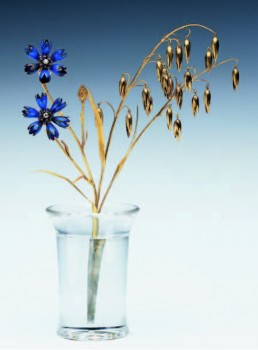
Cornflower and ear of oats: one of the several Fabergé gemstone ornaments now owned by Queen Elizabeth of England (gold, rock crystal, diamonds, enamel, ca 18 cm)
Ulla Tillander-Godenhielm
Fabergén suomalaiset mestarit
[Fabergé’s Finnish masters]
Design: Jukka Aalto/Armadillo Graphics
Helsinki: Tammi, 2011. 271 p., ill.
ISBN 978-951-31-5878-1
€57, hardback
In its online shop, the Hermitage Museum in St Petersburg sells a copy of a most delicate, enchanting little nephrite-and-opal lily of the valley that perfectly imitates nature, sitting in a vase made of rock crystal that looks like a glass of water.
These small flowers made of gold and gemstones were manufactured by the jeweller Fabergé a hundred years ago. The lily of the valley was the most frequently used floral motif in the Fabergé workshops – it was the favourite flower of Empress Alexandra (1872–1918), and the imperial family was the the foremost client of the world’s foremost jeweller.
The replica (13.5 centimetres high) is available at the Hermitage as a ‘luxury gift’ for the price of mere $3,300. (N.B. Since we published this review, the ‘luxury gift’ items seem to have disappeared from the Hermitage online shop selection, so we have removed the link. Several Fabergé egg replicas are available though, ranging in price from $200 upwards – link below.)
For those who feel the price is excessive, there is also a rather modestly-priced little bay tree (original: gold, Siberian nephrite, diamonds, amethysts, pearls, citrines, agates and rubies as well as natural feathers, about 30 centimetres tall, featuring a little bird that emerges flapping its wings and singing when a small key is turned) at just $ 219,95. Despite its form, it is classified as one of the famous imperial Easter eggs. (However, as I write, this item is unfortunately sold out…) More…
Aamu Nyström: I.K. Inha – Valokuvaaja, kirjailija, kulttuurin löytöretkeilijä [I.K. Inha – Photographer, writer, cultural explorer]
3 August 2011 | Mini reviews, Reviews
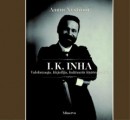 I.K. Inha – Valokuvaaja, kirjailija, kulttuurin löytöretkeilijä
I.K. Inha – Valokuvaaja, kirjailija, kulttuurin löytöretkeilijä
[I.K. Inha – Photographer, writer, cultural explorer]
Jyväskylä: Minerva, 2011. 271 p., ill.
ISBN 978-952-492-441-2
€ 31, hardback
I.K. Inha (1865–1930) was a photographer, a writer, a translator and a journalist. He is known particularly for his photographic journeys in Finland and Russian Karelia. Both the texts and the photographs in Inha’s landscape and nature works are of a high aesthetic standard. This book focuses on Inha’s lesser-known works and the various phases of his life. Inha’s travel diary documents the cycle journey he made as a student in 1886 to Germany and Switzerland. In 1897 Inha was appointed Finland’s first-ever foreign correspondent; from Athens he reported on events such as the Greco-Turkish War. In 1899 and 1901 Inha was posted to England, where he observed Queen Victoria’s funeral and the coronation of King Edward VII. Aamu Nyström, the niece of Inha’s brother, has had access to letters, photographs and written and oral recollections of family members.
Translated by Ruth Urbom
Juhani Koivisto: Suurten tunteiden talo. Kohtauksia Kansallisoopperan vuosisadalta [The house of great emotions. Scenes from a century of the Finnish National Opera]
30 June 2011 | Mini reviews, Reviews
 Suurten tunteiden talo. Kohtauksia Kansallisoopperan vuosisadalta
Suurten tunteiden talo. Kohtauksia Kansallisoopperan vuosisadalta
[The house of great emotions. Scenes from a century of the Finnish National Opera]
Helsinki: WSOY, 2011. 229 p., ill.
ISBN 978-951-0-37667-6
€ 45, paperback
2011 marks the one-hundredth anniversary of the founding of the Finnish National Opera. This richly illustrated and entertaining book describes events that have been absent from previous ‘official’ historical accounts. Readers will encounter over a hundred opera denizens who have made audiences – and, according to many anecdotes, each other – laugh and cry. The initial stages of the opera and ballet were modest in scope when viewed from outside, but the trailblazers involved were tremendous talents and personalities. The brighest star was the singer Aino Ackté, who enjoyed an international reputation. Gossip about intrigues and artistic differences at the opera house over the decades is confirmed in candid interviews with performers. The content of the book is based on archival sources, letters, memoirs, interviews and stories told inside the opera house. Juhani Koivisto, the Opera’s chief dramaturge, clearly has an excellent inside knowledge of his subject. Translated by Ruth Urbom
Kristiina Kalleinen: Kansallisen tieteen ja taiteen puolesta. Kalevalaseura 1911–2011 [On behalf of national science and art. The Kalevala Society 1911–2011]
10 June 2011 | Mini reviews, Reviews
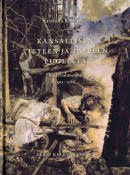 Kansallisen tieteen ja taiteen puolesta. Kalevalaseura 1911–2011
Kansallisen tieteen ja taiteen puolesta. Kalevalaseura 1911–2011
[On behalf of national science and art. The Kalevala Society 1911–2011]
Helsinki: Finnish Literature Society, 2011. 314 p., ill.
ISBN 978-952-223-256-5
€ 37, hardback
In 1911, the Finnish national epic Kalevala (1835, 1849), compiled by Elias Lönnrot and based on Finnish folk poetry, inspired the artist Akseli Gallen-Kallela, the sculptor Alpo Sailo, Professor E.N. Setälä and the folklorist Väinö Salminen to found the Kalevala Society (established in 1919), aimed at uniting Finland’s national science and art into a harmonious whole. As Russia tightened its grip on the Grand Duchy during the latter part of the nineteenth century, it awakened a desire to demonstrate the vitality of the Finnish language and national spirit. This book maps out the effect of the changing social and political situation on the Society’s activities. In the 1920s and 1930s the Kalevala Society remained largely outside the political and linguistic conflicts of the time. This was a period of extreme Finnish nationalism, but in the Society there was little inclination towards ‘Greater Finland’ thinking or anti-Russian or anti-Swedish sentiment. During Finland’s wars with the Soviet Union some members nonetheless had hopes of a Greater Finland, as many of the regions where the Kalevala poems originated lay on the Soviet side of the border. In recent years the Society has participated with other organisations in projects devoted to the regeneration of Russian Karelian villages and the protection of the last traditional Finnish landscapes.
Translated by David McDuff
Kari Kuula: Paholaisen biografia [The biography of the Devil]
13 May 2011 | Mini reviews, Reviews
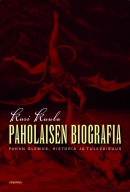 Paholaisen biografia. Pahan olemus, historia ja tulevaisuus
Paholaisen biografia. Pahan olemus, historia ja tulevaisuus
[The biography of the Devil. The essence of evil, history and future]
Helsinki, Kirjapaja, 2010. 381 p.
ISBN 978-951-607-837-6
€ 38, hardback
This book is a chronological study of the Devil, seen through the history of ideas and cultural history. As the Devil is mainly a concept in Christian theology, the most profound studies of his essence have been carried out by experts of this field. The book also studies the Devil’s ‘disciples’, demons, and beliefs related to them. The main theme of the work consists of the history of diabology and demonology, from the Old Testament to contemporary theology. Another central theme is the theological dilemma of why God allows evil and suffering. In the cultural history section the author concentrates on the practical implications of belief in the Devil in different ages as well as parallel phenomena such as possession and belief in witchcraft. Folk tales about the Devil and descriptions of his putative looks as well as some classic works of fiction featuring the Devil are discussed. Kari Kuula is doctor of theology and priest who has published several non-fiction books on the Bible and Christianity.
Elina Vuola: Jumalainen nainen. Neitsyt Mariaa etsimässä [The divine woman. In search of the Virgin Mary]
1 April 2011 | Mini reviews, Reviews
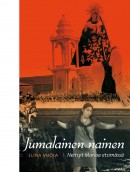 Jumalainen nainen. Neitsyt Mariaa etsimässä
Jumalainen nainen. Neitsyt Mariaa etsimässä
[The divine woman. In search of the Virgin Mary]
Helsinki: Otava, 2010. 220 p., ill.
ISBN 978-951-1-22364-1
€ 34, hardback
This book is about the Virgin Mary and in particular her role in women’s religious experience. Theologian Elina Vuola considers that the doctrines concerning the Virgin Mary have quite a lot in common, as the principal dogmas were formulated in the early centuries of Christianity. As a partial explanation of the difference between the Mary of the Church and the Mary of popular faith, the author adduces the fact that with few exceptions women in Finland did not begin to receive theological training until the second half of the twentieth century. The central question in the book is whether or not Mary is the crowned queen of a patriarchal religious faith that is hostile to women, a harmful role model. Vuola avows herself to be a representative of the trend in women’s religious studies that takes a more positive and multifaceted view of Mary. In the section devoted to the Mary of Karelian folk religion it becomes evident that in Finland and its surrounding regions there are interpretations that are surprisingly similar to those found in Latin America.
Translated by David McDuff
Homo ludens, vita brevis
18 March 2011 | Letter from the Editors
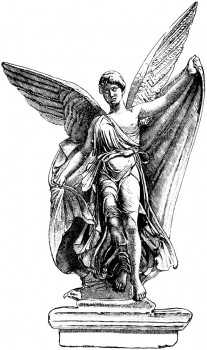
Goddess of victory: charioteer and runner Nike (constructed from the damaged statue of Nike of Paionios, from ca. 420 BCE). Photo: Wikimedia
No one should ever start a piece with ‘already the ancient Greeks…’ , but here goes:
Already the ancient Greeks practised the noble arts of sport. The Romans extended the cultivation (their word!) of culture to leisure, amusing themselves by throwing Christians to the lions. Formula F1 came a couple of thousand years later, as did post-modern art, sitcoms and reality TV, whose presenters take the place of lions and whose celebrities are today’s Christians.
The Olympics, founded by the Greeks, were in full swing as early as the seventh century BCE, until the Christian Roman Caesar Theodocius I banned them as irretrievably pagan in the year 393. However, they were revived 1,500 years later. More…
Stories in the stone
2 December 2010 | Extracts, Non-fiction
Extracts from Jägarens leende. Resor in hällkonstens rymd (‘Smile of the hunter. Travels in the space of rock art’, Söderströms, 2010)
 ‘Why do some people choose to expend what is often a great deal of effort hammering images in the bedrock itself, while others conjure up, in the blink of an eye, brilliantly radiant pictures on a rock-face that was empty yesterday but is now peopled by mythological animals, spirits and shamans?
‘Why do some people choose to expend what is often a great deal of effort hammering images in the bedrock itself, while others conjure up, in the blink of an eye, brilliantly radiant pictures on a rock-face that was empty yesterday but is now peopled by mythological animals, spirits and shamans?
‘I think about this often – I who love painting but who still chose a career that involves me sitting and hammering away, day in and day out, like a true rock-carver,’ writes author and ethnologist Ulla-Lena Lundberg in her new book on the art of the primeval man
When the children of Israel went into Babylonian captivity, hanging up their harps on the willow-trees and weeping as they remembered Zion, my sister and I were already sitting by the rivers of Babylon. We knew how they felt. Our father was dead and we had been sent away from our home. We sat there clinging to each other, or rather I was the one clinging to Gunilla, and she had to try to rouse herself and find something for us to do, to give us something else to think about. More…
Heartstone
2 December 2010 | Reviews
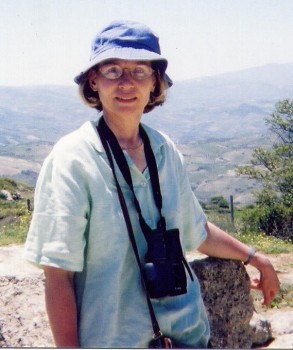
Ulla-Lena Lundberg
‘Knowledge enhances feeling’ is a motto that runs through the whole of Ulla-Lena Lundberg’s oeuvre – both her novels and her travel-writing, covering Åland, Siberia and Africa.
In her trilogy of maritime novels (Leo, Stora världen [‘The wide world’], Allt man kan önska sig [‘All you could wish for’], 1989–1995) she used the form of a family chronicle to depict the development of sea-faring on Åland over the course of a century or so. She gathered her material with historical and anthropological methodology and love of detail. The result was entirely a work of quality fiction, from the consciously old-fashioned rural realism of the first volume to the contradictory postmodern multiplicity of voices in the last – all of it in harmony with the times being depicted.
When Lundberg (born 1947) takes us underground or up onto cliff-faces in her new documentary book, Jägarens leende. Resor i hällkonstens rymd (‘Smile of the hunter. Travels in the space of rock art’), in order to consider cave- and rock-paintings in various parts of the world, she also reveals a little of the background to this attitude towards life that takes such delight in acquiring knowledge – an attitude that is familiar from many of the protagonists of her novels. More…
Petri Keto-Tokoi & Timo Kuuluvainen: Suomalainen aarniometsä [The Finnish virgin forest]
12 November 2010 | Mini reviews, Reviews
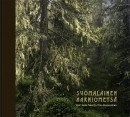 Suomalainen aarniometsä
Suomalainen aarniometsä
[The Finnish virgin forest]
Helsinki: Maahenki, 2010. 302 p., ill.
ISBN 978-952-5870-06-0
€ 48, hardback
This book explains the cultural significance of forests – particularly virgin forests – to Finns. That term is used to refer to old-growth forests in their natural state, characterised by trees of different ages, an abundance of decaying tree remains, and continuous incremental changes. Nowadays around four per cent of Finnish forests are in a natural or near-natural state, and light is being shed on their ecosystems and the history of the slowly vanishing virgin forests. They are associated with deep-seated values and a multiplicity of roles throughout history. To many artists forests have been a significant elemental force, worthy even of worship; peasants and the timber industry have exploited the virgin forests. The authors also consider whether answers to key environmental issues will be found in old-growth forests: safeguarding natural diversity and slowing climate change. In addition to illustrative material from the authors, the book contains photographs by award-winning photographers Ritva Kovalainen and Sanni Seppo.
In the beginning was… DNA?
8 October 2010 | Reviews

Adam and Eve, or the elephants: Osmo Rauhala’s sketch of The Fall of Man. As the bull eats the apple, evil rises from the ground in the form of a plant with eyes: a ‘misbreed’, a cross of two species alien to each other
Kuutti Lavonen – Osmo Rauhala – Pirjo Silveri
Tyrvään Pyhän Olavin kirkko – sata ja yksi kuvaa /
St Olaf’s Church in Tyrvää – One Hundred and One Paintings
Toim. / Edited by Pirjo Silveri
Translations: Silja Kudel, Jüri Kokkonen
Helsinki: Kirjapaja, 2010. 143 p., ill.
ISBN 978-952-247-103-1
€44.30, hardback
The old shingle roof of the early 16th-century stone church of St Olaf in Tyrvää, in the province of Pirkanmaa, southern Finland, was repaired by village volunteers in 1997. Three weeks after they completed their work, a drunken arsonist set the church on fire. More…
Irma-Riitta Järvinen: Kalevala Guide
10 September 2010 | Mini reviews, Reviews
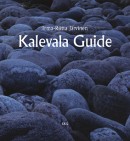 Kalevala Guide
Kalevala Guide
Helsinki: Finnish Literature Society, 2010. 127 p., ill.
ISBN 978-952-222-193-3
€ 24.90, paperback
This book is a brief but comprehensive English-language guide to the Finnish national epic, which was based on the archaic oral, sung folk poetry of Karelia, but collected and personally compiled by the scholar and writer Elias Lönnrot (1802–1884). The epic (first edition 1839, complemented in 1849) is set in a mythic past; technically speaking, the metre is an unrhymed, non-strophic trochaic tetrametre, characterised by alliteration. Contents, characters, places and themes are explained in the Guide, which also explores myths of origin and the significance of the epic. On his eleven trips to Archangel and North Karelia, Lönnrot met some 70 singers. The Kalevala, now translated, at least in part, into more than 60 languages, has inspired artists the world over (J.R.R. Tolkien was a fan, while Henry Wadsworth Longfellow’s Hiawatha imitates the metre and style of the Kalevala). The composer Jean Sibelius and the artist Akseli Gallen-Kallela are perhaps the best known Finnish Kalevala artists. And the inspiration continues: for instance, rock musicians and visual artists make use of Kalevala themes, stories and characters in their work. The book includes a list of relevant websites and a select bibliography.
Konstnärsbröderna von Wrights dagböcker 1–7 [The diaries of the von Wright brothers, Vols. 1–7]
1 April 2010 | Mini reviews, Reviews
 Konstnärsbröderna von Wrights dagböcker 1–7
Konstnärsbröderna von Wrights dagböcker 1–7
[The diaries of the von Wright brothers, Vols. 1–7]
Magnus von Wright: Dagbok [Diary] 1824–1834. 407 p., ill. ISBN 951-583-026-5
Magnus von Wright: Dagbok [Diary] 1835–1840. 470 p., ill. ISBN 951-583-040-0
Magnus von Wright: Dagbok [Diary] 1841–1849. 431 p., ill. ISBN 951-583-047-8
Magnus von Wright: Dagbok [Diary] 1850–1862. 496 p., ill. ISBN 951-583-060-5
Magnus von Wright: Dagbok [Diary] 1863–1868. 493 p., ill. ISBN 951-583-085-0
€ 46 each, hardback
Wilhelm & Ferdinand von Wright: Dagböcker [Diaries] 615 p., ill. ISBN 978-951-583-137-8.
€ 46, hardback
Index: 398 p., ill. ISBN 978-951-583-138-5. € 20, hardback
Helsinki: Svenska Litteratursällskapet i Finland, 1996–2010
Toimittaneet [Ed. by]: Anto Leikola, Juhani Lokki, Torsten Stjernberg, Johan Ulfvens
The three von Wright brothers, who came from a family with nine children in rural north Savo (in eastern Finland), shared a talent for meticulous observation combined with masterful technique and a romantic style. Each of these artists, who were active during the Biedermeier era, was a trailblazer in his own field: Magnus (1805–1868) as a proponent of Finnish national art, Wilhelm (1810–1887) as a wildlife illustrator, and Ferdinand (1822–1906) as a painter of landscapes and birds. Their contribution to Nordic ornithology is considerable. The index volume to the von Wright brothers’ diaries (which were written in Swedish) includes lists of their artworks and details of works held by collections abroad. This series is of significant cultural importance, and it is remarkable for its scientific accuracy. Five volumes consist of Magnus von Wright’s diary entries, which he wrote daily from 1820 up until his death. The sixth volume contains diary entries by the two younger brothers, which provide insights into the everyday life and society of that era, as well as the artists’ working practices and their relationship with nature.
Suomalaiset pappilat [Finnish parsonages]
20 November 2009 | Mini reviews, Reviews
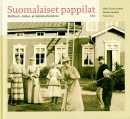 Marja-Terttu Knapas & Markku Heikkilä & Timo Qvist
Marja-Terttu Knapas & Markku Heikkilä & Timo Qvist
Suomalaiset pappilat. Kulttuuri-, talous- rakennushistoriaa
[Finnish parsonages. A cultural, economic and architectural history]
Picture research: Sirkku Dölle
Helsinki: the Finnish Literature Society, 2009. 231 p., ill.
ISBN 978-952-222-096-7
€48, hardback
From the Enlightenment period in the 18th century up until the 20th century, Lutheran parsonages played a significant role in Finland as centres of worldly life and propagators of culture and civilisation. Influential figures in many walks of life spent their childhoods in parsonages, and the parsonages themselves served as influences on the built environment of their surroundings. They began to be taken out of active use at an accelerating rate over the course of the 20th century. This book sets out to portray parsonages with interesting personal and social history and architecture. It also creates a narrative of the milieu and family networks of clergymen and their families – an institution that gradually began to break down in Finland after the Second World War. The portrayal of life in the parsonages is closely linked to the broader themes of agriculture, gardening and food. Illustrations from the collections of Finland’s National Board of Antiquities are supplemented by photographs from other museums as well as individuals.
